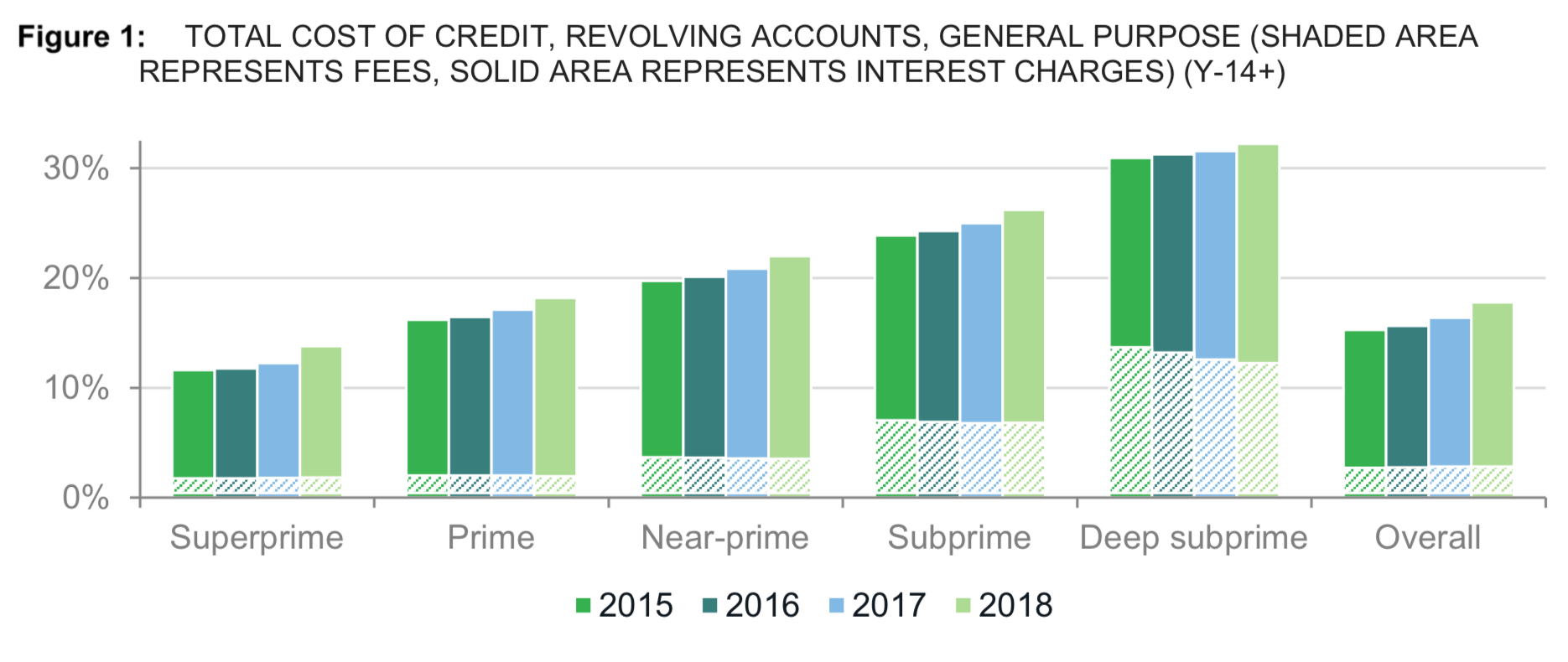Payment Tech:
From Pain Points to Innovation
Instructor: Andreas Park
Rotman School of Management & FinHub, Rotman's Financial Innovation Lab
Date: June 2023
Business of Payments Executive Ed


A quick survey, before we even start
please navigate to
My agenda
Topic: Innovations in payments: Why and how?
- Understanding payments-related pain points
- Study solutions from around the world
Goal: Convey solutions and competitive developments to payments-related challenges of consumers & businesses
HOW Part 1: Innovation WITHIN the current institutional arrangements
HOW Part 2: Innovation OUTSIDE the current institutional arrangements
- blockchain and decentralied finance
- Central Bank-issued Digital Currencies
Part 1
Innovation WITHIN the current institutional arrangements
Where are we?
Big Picture
Small Businesses
Consumers and Merchants
Some totally unscientific evidence
sending money peer-to-peer
help with budgeting
mortgage
loans for car
payment card
Recent in-class discussion assignment (50 students)
What do you need a bank for? (in this order)
in many countries, this space is FinTech
Why Payment Innovation?
Source: CNBC Jan 15, 2021, https://www.cnbc.com/2021/01/15/jamie-dimon-says-jpmorgan-chase-should-absolutely-be-scared-s-less-about-fintech-threat.html
Why? Highest touchpoint between customer and bank


"Payments is the hill for banks to die on"

"JPM should absolutely be scared s**tless about the FinTech threat"
Why Payment Innovation?
payments is a profitable line of business
payments data is very valuable
payments \(=\) clunky and full of frictions
payments is the entry level drug to all things FinTech
Legacy institutions are most likely attacked where the greatest sources of customer friction meet the largest profit pools
Giancarlo Bruno, Senior Director, Head of Financial Services Industry, World Economic Forum
payments matter a lot more to people than we might think
fritctionless
fast
open & expandable
cheap
secure
How would a perfect payment system look like?
Big Picture
Small Businesses
Consumers and Merchants
Are people well serviced? A provocative review


Who pays with dead trees and why?
Not who you think:
- The young: 18–34
- rent payment
- payments or gifts to other people


%change is for past 5 years
Are people well serviced? A provocative review
Why do people use cash?
- Fast 45%
- Able to use my own funds (rather than borrow) 32%
- Widely accepted 29%
- Anonymous 25%
- Easier to keep track of expenses 24%
Fun Fact: cash is probably the only day-to-day item that you have to get in-person



2020 Survey
2021 Survey

An alternative view of cash: it is still necessary

... it's just 9 steps away!
- Open banking website
- enter account number
- enter password
- enter 2FA
- navigate to e-transfer
- add contact with name and email/phone => add
- fill transfer info
- possibly add password and message
- review and send


But you can interac e-transfers!

?


https://www.brookings.edu/opinions/real-time-payments-can-help-combat-inequality/
Speed matters
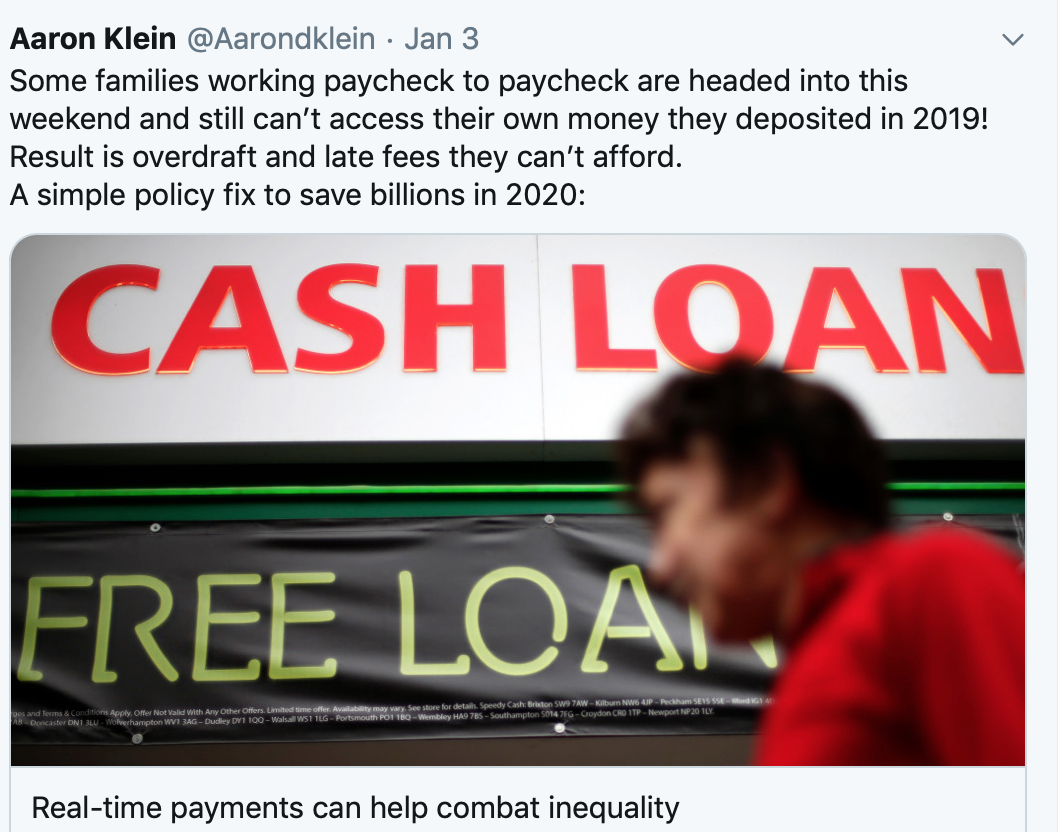

https://www.brookings.edu/opinions/real-time-payments-can-help-combat-inequality/

How is it that Amazon delivers same day but merchants receive their payment two days later?
Are people served well? U.S. data on why speed matters
- In 2015, underserved consumers spent $140.7 billion on fees and interest across five financial product categories that serve the "under-banked"
- Slow payments drives individuals to use
- high cost check cashers $2 billion
- small dollar ‘pay day’ lenders $7 billion
- bank overdraft fees $24 billion
- Not all but some of this stems from slow payments - why?
- Get paid on the 30th by cheque
- rent is due on the 1st
- cheque clears on the 2nd or 3rd
Source: Schmall & Wolkowitz (2016), Center for Financial Services Innovation (2016) "Financially Underserved Market Size Study"
A little detail the deserves attention: push vs pull
- Sue needs to provide critical information
- doesn't know when funds will be taken
- difficult to have real-time information on all obligations
- incentive for some creative intra-day "transaction re-ordering"
Pull
Push
- Sue in control of her funds at all times
- real-time information on holdings
- \(\Rightarrow\) easier to avoid accidental overdrafts
- NB: Realtime rails are typically PUSH
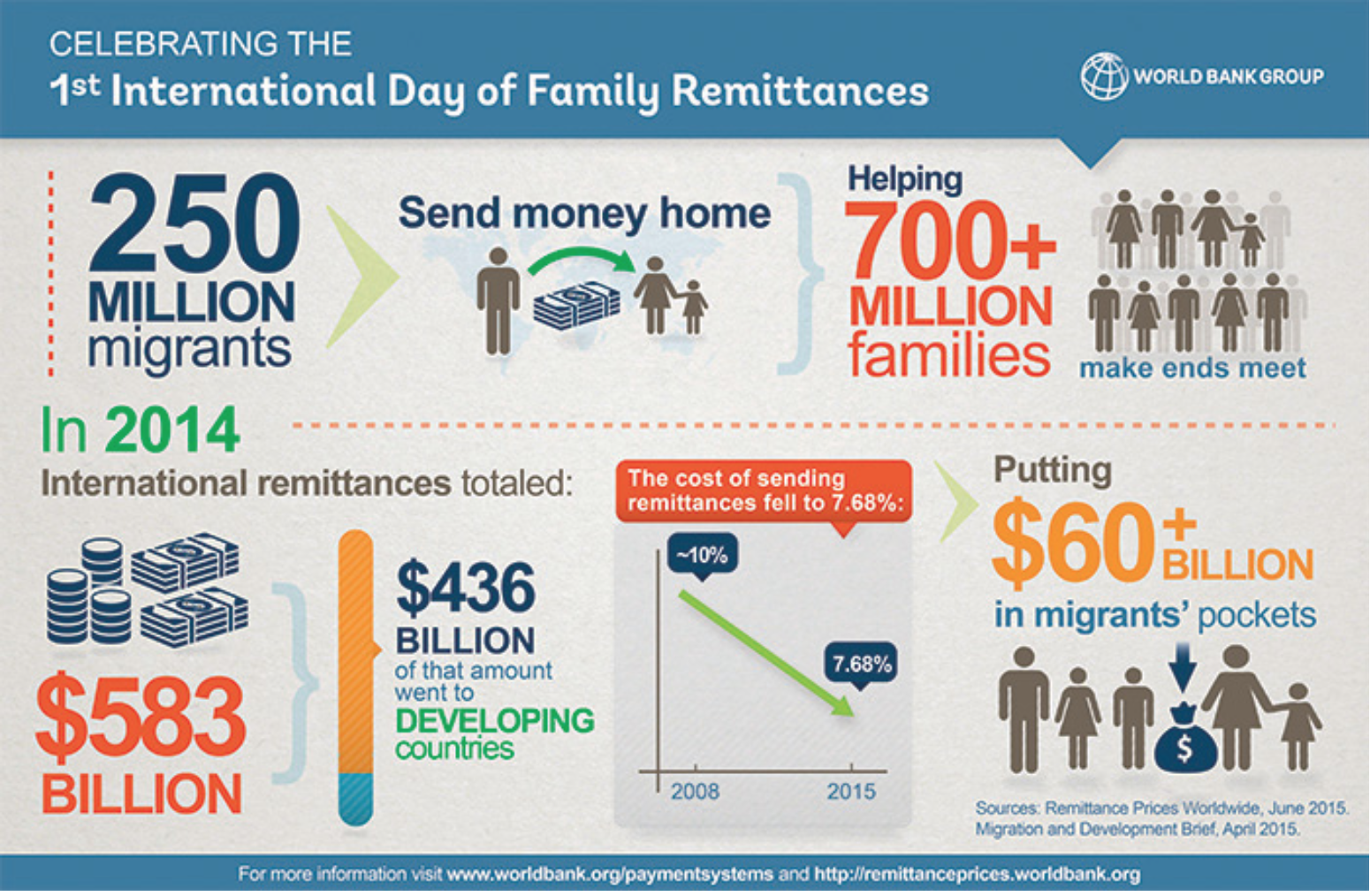

- Remittance cost estimates:
- https://remittanceprices.worldbank.org/
- Statcan report: https://www150.statcan.gc.ca/n1/pub/89-657-x/89-657-x2019007-eng.htm
- For perspective:
- fee for $200: 10.7% for bank, 9.8% for agent
- annual: \(\approx\) USD250
- for comparison:
- 1kg rice costs USD2.50
- \(\oslash\) adult consumes 120 kg rice p.a.
- assume kid consumes \(\frac{1}{2}\times\) adult
- \(\Rightarrow\) fees > annual rice for 1 kid
- Payments Canada: 15% of Canadians sent money overseas in 2020
- In 2017: $10B in remittances to East Asia and the Pacific.
- Often: new immigrants support their families at home
- Statcan: 56% use money transfer stores, only 14% use a bank. Main argument: ease of user for sender & receiver
- Most amounts are small and costs high.
Canada is a country of immigrants

- Canada has 800,000 international students
- admits around 300,000-400,000 annually
- Government of Canada: "We estimate that in 2017 and 2018 respectively, international students in Canada spent $18.4 billion and $22.3 billion on tuition, accommodation, and discretionary spending."
- Most of these funds are transferred from foreign countries to Canada in large sums.
- Students regularly get harrassed by tellers/banks about the source of their funds.
Canada is a country of international students
- To get admitted & get a visa you need to
- make a sizeable deposit
- prove that you have funds for tuition and sustaining your life
- How??? \(\to\) expensive brokers and other shady arrangements




Big Picture
Small Businesses
Consumers and Merchants

Source: How can payments modernization benefit Canadian businesses? Evaluating the cost of payments processing; EY and Payments Canada, 2018
From Wendy Rotenberg: 734 Million Cheques for $4 Trillion
Undue Risk Aversion:
Financial institutions often won't offer payment solutions to small business, due to their credit risk profile.
B2B payments:
most financial institutions charge base fee + transaction fees
Payroll:
Need for payroll solutions for SME that are integrated with accounting systems.
Credit cards:
SMEs need to use owner's personal card which affects their personal credit score
Accounting/corporate finance
Small businesses have to integrate payment activities to accounting platforms themselves.

:$1 per transaction
Small Business Grievances: Anecdotal Evidence
Business: Better Data and Faster Processes?
Manual/Excel-based, stand-alone cash need forecasts
\(\Rightarrow\) inadequate cash management

Source: How can payments modernization benefit Canadian businesses? Evaluating the cost of payments processing; EY and Payments Canada, 2018
SME: why do they need the money?
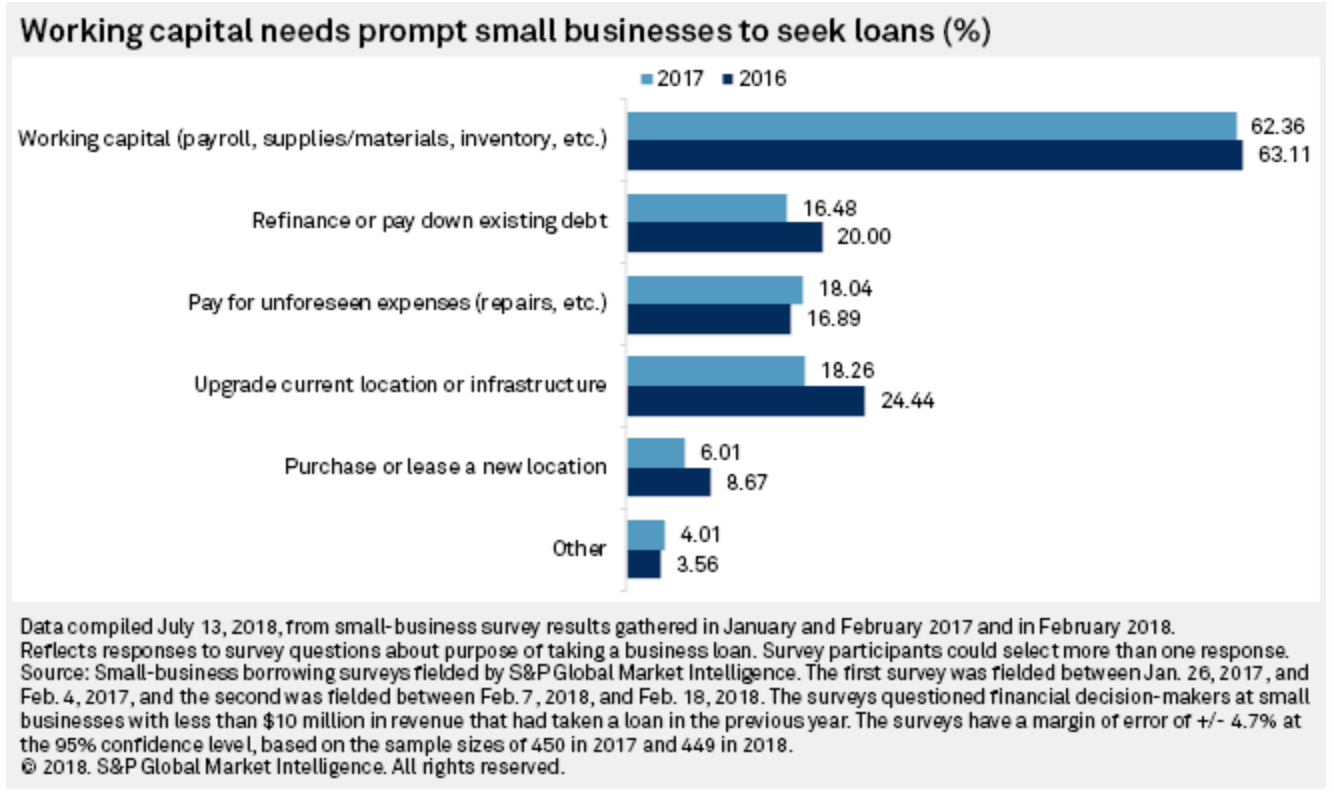
Summary: sub-optimal payment processing costs Canadian businesses $2.9 to $6.5 billion annually
Source: How can payments modernization benefit Canadian businesses? Evaluating the cost of payments processing; EY and Payments Canada, 2018
So: Where are we?
We're not there yet ...
Can we get there with FinTech and PayTech?
Can innovation get us there?



gig economy instant pay

fast vendor payment and B2B & inter-company real time payments

PayTech firms fill the void within their platforms
What are the risks for customers?
Examples of PayTechs


-
credit card issuer
-
easy reward point redemption
-
in-app loan application
-
buy now pay later
-
Pitch: $16 billion of rewards left unredeemed each year by Canadians.
-
Why? Cumbersome, not relevant or have been devalued.
-
With Brim, points accrue at market fare because user purchase first and then redeem rewards. No redeeming at a marked-up value. The platform makes earning and redeeming simple.
Examples of PayTechs
-
enable businesses to make deposits in real-time directly to an account in seconds, not days
-
payments usually take 4-5 days
-
Companies such as Borrowell provide on-demand loans for businesses and consumers. Without Pungle, businesses that need cash instantly, whether to settle up with a supplier or pay for an unexpected expense, must wait several days to receive the money.
-
Gig economy: employees expect to be paid instantaneously or at shift-end. We’ve found that the more frequent payment of wages has had a direct correlation with lower turnover.


Will interac for business
solve all these issues?
Innovations in Non-physical Payments around the world
Danish Mobile Pay
4+ million users (population 5.7M)
235+ million transactions, 8.6Bn EUR value


launched by Danske Bank, but bank-neutral
instant payments based on mobile phone numbers

Critical component: "digital" ID
Mobile Money in the Developing World


Mobile Payment
Mobile Money



Cash-In
agent
Cash-Out
agent
Mobile Apps in Emerging Economies











and almost every other 905 tourist mall
- 900M WeChat Pay Users
- 84% market penetration
Mobile Apps in Emerging Economies
These apps offer more financial services than payment



Real Time Retail Payments in Emerging Economies

- launched in Nov 2020
- 365/7/24 system
- Process:
- user generates a PIX key through its bank stored in central database DCIT.
- Key=address on PIX network added on top of the existing bank account
- Oliver Wyman prediction:
- 22% of electronic payments by 2030
-
reality:
- 72% of electronic transactions in Oct 2021
- uptake: 62% of Brazilian population
Key institutional facts
- forced development by central bank to improve competition in payments
- built time: 9 months
- cost: $5M
The Threat of Big Tech
Innovations by BigTech
BigTechs operating as FinTechs in Canada



New frontier: revenue-based lending

14.5% interest - over what horizon?
Government Intervention


Basic Idea: Allow external party access to your bank account information
\(\Rightarrow\) information/data sharing
Future Services
-
360-degree analysis
-
transfers among various accounts
-
product integration and linking
-
payment initiation
-
linking of reward services
-
immediate credit assessment
Current FinTech solution: data scraping
may require legal & technological changes
Open banking - what is it?
Open banking - learning from the UK

AI chatbot that chides you if you overspend and that advises you if an expense fits your budget

allows you to redesign your salary pay structure (make monthly weekly etc)

get alerts for suspicious transactions of elderly parents

Moneybox
aggregates all your banking related services


- advanced budgeting and planning
- manage all subscriptions and bills
What do people in Canada think?
59% only trust their bank with their financial data.
75% are not interested in open banking
91% worry about the privacy
Source: Accenture Consulting Open Banking in Canada: Opportunity Knocks
71% say their concerns can be addressed with technology
20-30% would share significant personal information with a non-bank in exchange for better pricing on products and services.
End of Part 1 survey
please navigate again to
End of Part 1 debate
Discussion topic: "Canadian Banks are well-positioned to serve its customers '(consumers and businesses) payments needs"
Setup: Random sorting into TWO groups
- Group 1: Agrees and defends this statement with this statement.
- Group 2: Disagrees
Format
- Each group presents its arguments (3 min each)
- Each group presents a rebuttal (1 min each)
- Vote on who had the better argument.
Your task for the next 10 minutes
- prepare your arguments and rebutals of the arguments that you think the other side will present
Part 2
Innovation OUTSIDE the current institutional arrangements
Outside Force #1: Decentralized Finance
What is a Cryptocurrency?

Conceptually: What is a Blockchain?

payments
stocks, bonds, and options
swaps, CDS, MBS, CDOs
insurance contracts

A blockchain is a
- general purpose
- open access
- value management
- infrastructure
- that is communally run
What makes DeFi different from TradFi
decentralized finance =
provision of financial service functionality without the necessary involvement of a traditional financial intermediary like a bank or broker-dealer*
digital media =
provision of information service functionality without the necessary involvement of a traditional information intermediary like a publisher, library, or newagency
*my take: applies to only commoditizable services
trading Infrastructure
payments network
Stock Exchange
Clearing House
custodian
custodian
beneficial ownership record
seller
buyer
Broker
Broker










Application: decentralized trading with automated market makers













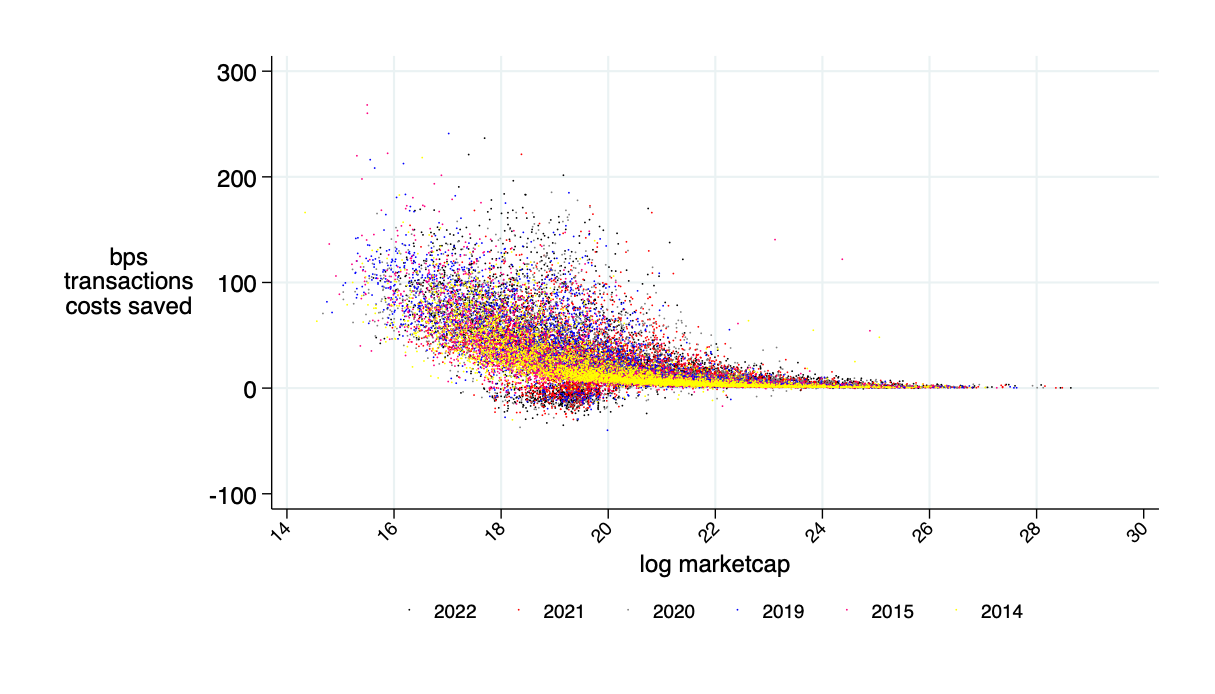
Source of savings:
- better risk sharing among liquidity providers
- better use of capital
Possible transaction cost savings: \(\approx\) 30%
Source: "Learning from DeFi: Would Automated Market Makers Improve Equity Trading?" working paper, Malinova & Park 2023
Application: Decentralized Borrowing & Lending











borrow
provide collateral
The Flow of Event: Normal Times
The Flow of Event: Collateral Liquidation


Obvious Smart Contract Application: Automate Investment Strategies



idea: create new mutual fund like asset


"yield aggregator:" push capital where rate of return is highest
Peer-to-peer \(\Rightarrow\) Platforms
liquidity \(\nearrow\)
volume \(\nearrow\)
protocol fees \(\nearrow\)
token value \(\nearrow\)
Platform economics is tricky:
- What's the product?
- How do you get it started?
- How do you get people to contribute?
- How do you earn money?

it works!
Stablecoins
BTC, ETH
fiat: USD, EUR
asset (gold)
fee-backed
Seigniorage
Crypto
Traditional
Algorithmic
Collateral-Backed
Taxonomy of Stablecoins
Stablecoins: Digital Representations of the USD

BIS Survey of Central Banks:

Some data





cellphone data from 2018 (NewZoo), inflation from 2020 (World Population Review)




Source: On-chain Foreign Exchange and Cross-border Payments by Austin Adams, Mary-Catherine Lader, Gordon Liao, David Puth, Xin Wan (2023) [team from UniSwap Labs]
DeFi fees:
- fiat to crypto on ramp: 0%-1%
- exchange fees 1-5bps
- network fee: $0.001-5$
- off-ramp fee: 0%-1%
- total: from close to 0 to 2%+$5
Money Laundering and Crime
Banned addresses


Tornado cash


Chainalysis Crime Report


extra info:
- 2019: PlusToken Ponzi scheme
- numbers depend on known addresses, e.g., 2021 report listed ~.3% for 2020 and upped to .65 now
Outside Force #2:
Central Bank-Issued Digital Currencies
Evolution



(now defunct)

CBDCs are on their way



Chrystia Freeland Justin Trudeau
of all things crypto and digital in Canada
A CBDC in Canada ... ?
What has happened in the CBDC space in the past 12 months?
- Canada related:
- Bank of Canada research: works with MIT
- Toronto Star article for DoF: "significant impact for financial sector"
- BIS Innovation Hub Toronto for North American CBDC work, Ripple Labs in TO
- Budget 2022: $17M to DoF/BoC for CBDC work over 4 years
- Worldwide (incomplete list)
- US: Executive order to study intro of CBDC
- China: deployment during Olympics
- Project Dunbar (AUS, Malaysia, Singapore, SA)
- Group of Seven report
- Hoover report on China \(\leftrightarrow\) US & CBDCs
What digital money?
fast money
real time rails run by chartered banks
CBDC
run by
chartered banks
run by
Bank of Canada
new communually run system
Stablecoin
private firm (e.g. Facebook)
CBDC on public blockchain
chartered bank-issued on public blockchain
Can and will the Bank of Canada issue a CBDC?
The Bank of Canada's Contingency Plan (Feb 2020):
Consider Issuing CBDC if:
- Cash becomes unusable, and/or
- An alternative digital money starts taking over
Will they?
Veneris, Park, Long, Puri (2021): BoC is in a legal position to issue a CDBC and there are several legal paths to do so


Can they?
What's Next?



CBDCs
- regulatory action
- FIs to provide some services
- continued evolution
- major disruption for FIs
- DefFi => Diem
- new finance brands
- "CBDC as service"
- few "real" CBDCs
End of Part 2 survey
please navigate again to
End of Part 2 debate
Discussion topic: "Decentralized Finance on public blockchains will play a bigger role in the future of finance and property than CBDCs, Diem, or a banking-sector solution"
Setup: Random sorting into TWO groups
- Group 1: Agrees and defends this statement with this statement.
- Group 2: Disagrees
Format
- Each group presents its arguments (3 min each)
- Each group presents a rebuttal (1 min each)
- Vote on who had the better argument.
Your task for the next 10 minutes
- prepare your arguments and rebutals of the arguments that you think the other side will present
Conclusion
digitization of payments is advancing
innovation in the sector indicates that there are unfilled customer needs
traditional players are well set up for now, but there are significant pain points
traditional players have difficulty innovating (lack of need, compliance, cannibalization fears)
DeFi creates new ideas and opportunities, CBDC use case is still unclear
@financeUTM
andreas.park@rotman.utoronto.ca

slides.com/ap248
sites.google.com/site/parkandreas/
youtube.com/user/andreaspark2812/


$16B for transactions costs?


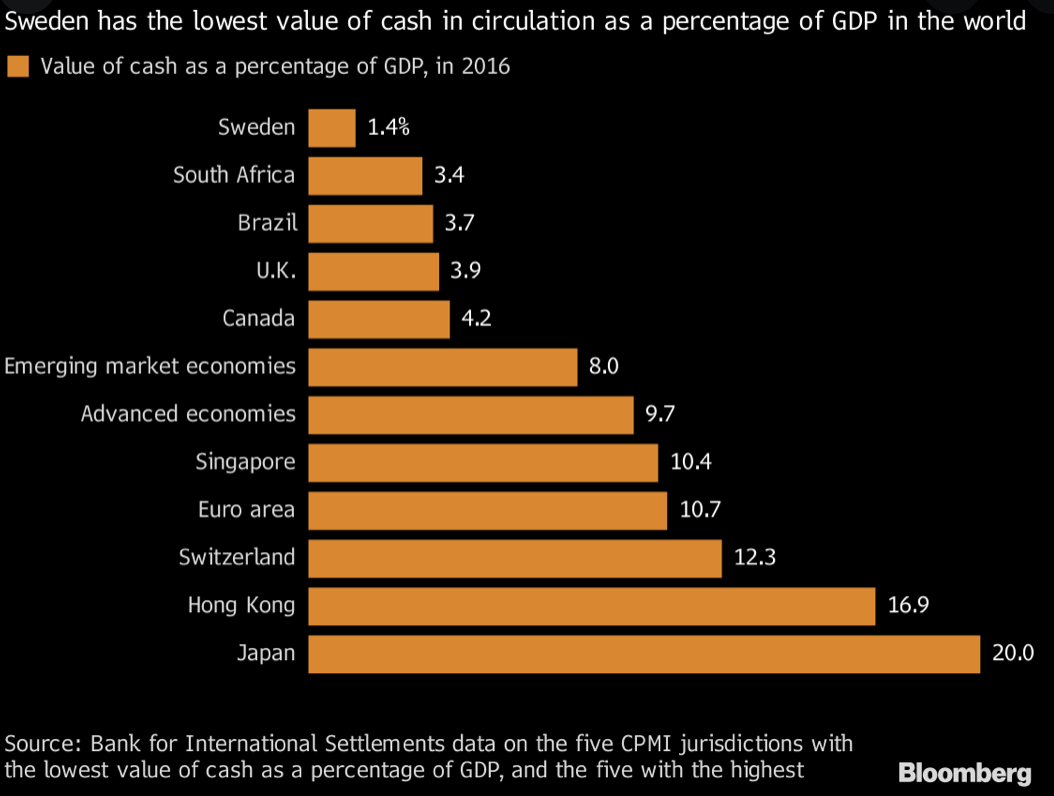
Cash and drugs: Cannabis legalization in Canada
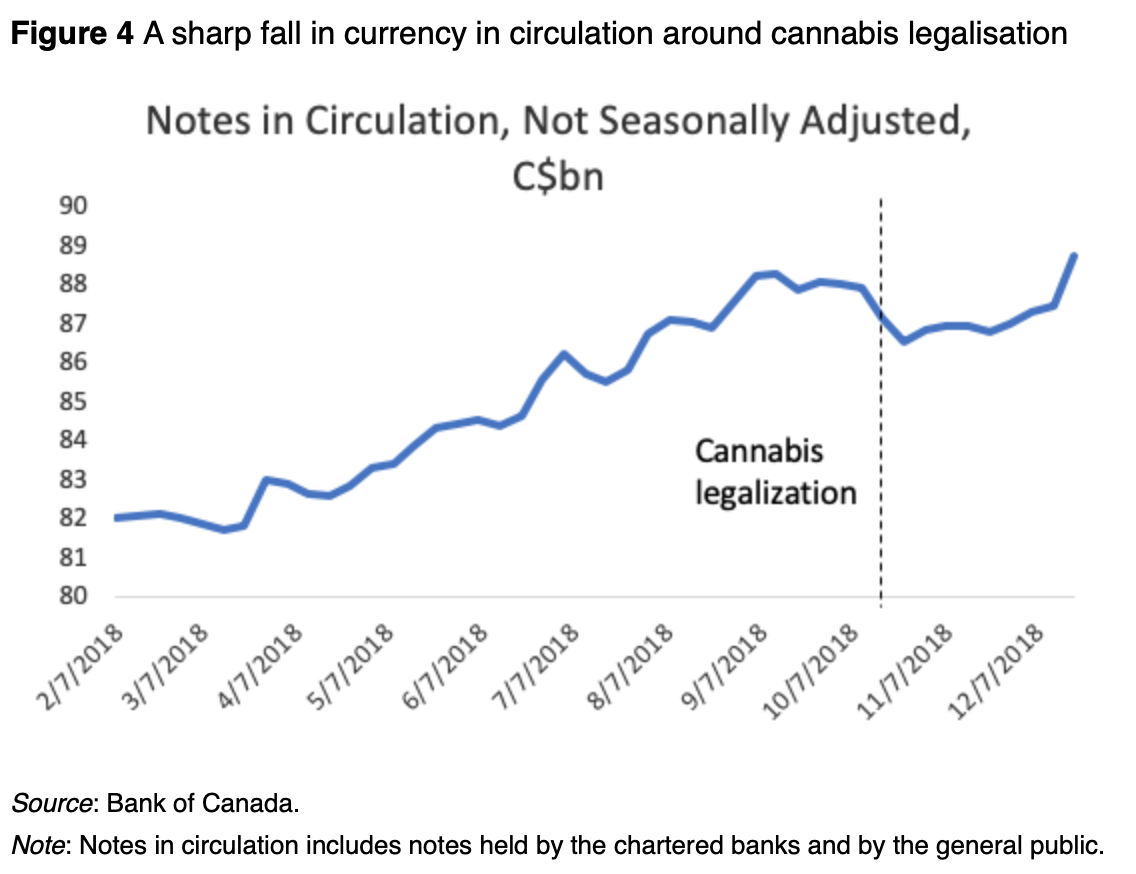
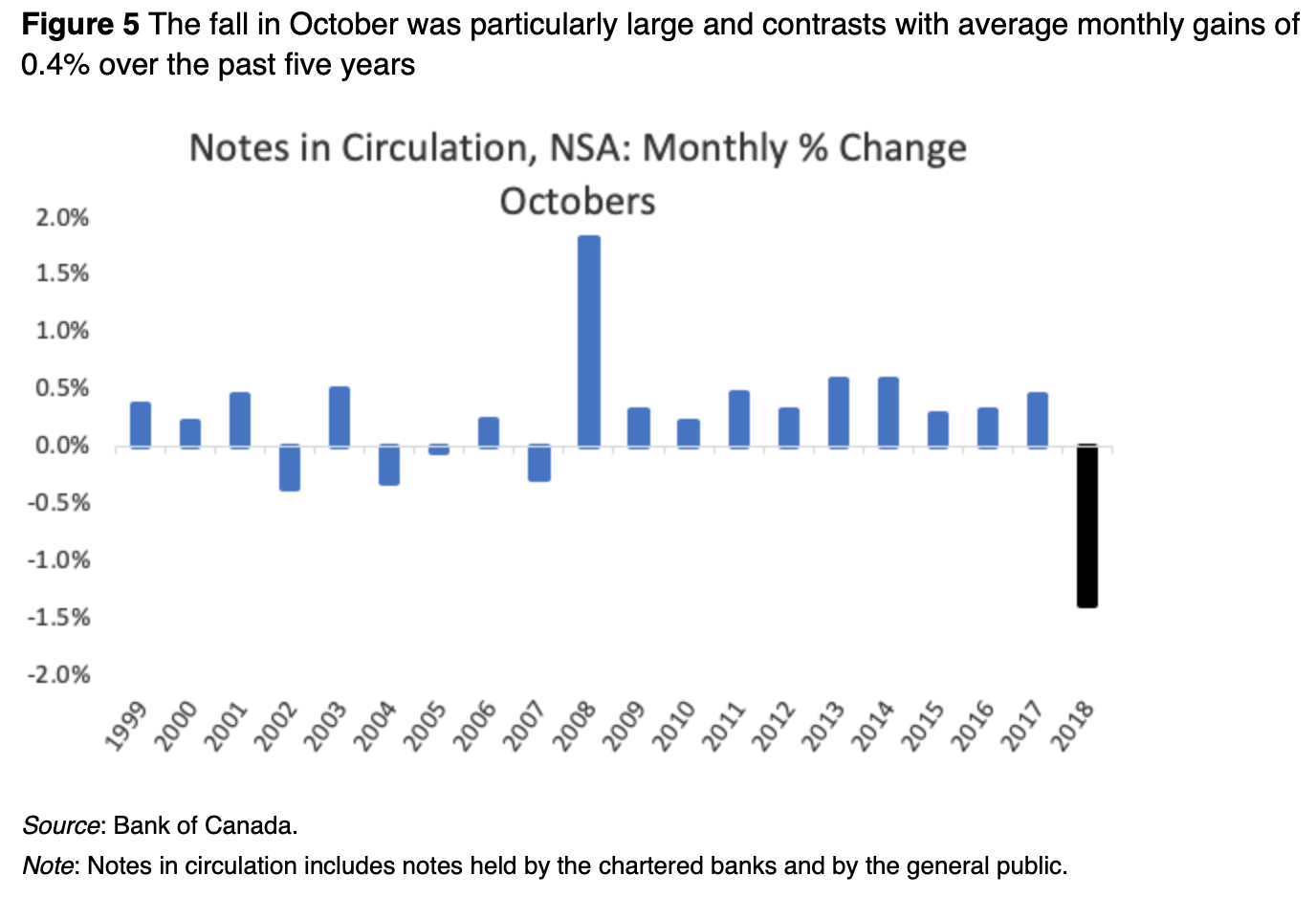
Obstacles & Hurdles
PayTech
banking and payments activity require a banking license
need approval of the Finance Minister and the Office of the Superintendent of Financial Institutions (OSFI)
Hurdle #1: Current Law
Pain Points & Adoption Hurdles
providing any financial service
acting as a financial agent
providing investment counselling or portfolio management services
issuing payment, credit, or charge cards,
operating a payment, credit, or charge card plan in co-operation with others (including other financial institutions)
Wide Reach of the Law
Hurdle 1: Current Law
Existing banks protected from (too much) competition
granting of bank license has extensive list of regulatory criteria (subject to political interpretation)
takes 2 to 5 years to successfully acquire a banking license in Canada
Rogers applied in 2011 and was granted a Schedule I bank license in 2013
most FinTechs and PayTechs do not have the time or money to acquire a banking license
High Regulatory Adoption Hurdle
Hurdle 1: Current Law
-
PayTech demonstrated use and purpose of prepaid card to regulator
-
OSFI rep had never seen one, not had any experience in dealing with the regulatory implications of this product.
-
OSFI and others do not have Fintechs and PayTechs in scope (not yet threat to the safety and soundness of the financial system).
Lack of Knowledge by Regulators
EXAMPLE #1
Hurdle 1: Current Law
-
regulatory compliance = lawyers
-
lawyers = second line of defence teams at FI
-
\(\Rightarrow\) decision makers have very little access to clients and the frontline.
EXAMPLE #2
good at general service and infrastructure
banks have very rigid ways of engaging with their clients, “they push information, they don’t take it”
\(\Rightarrow\) poor at customization and customer service
Banks & the Last Mile Problem
Banks' Modus Operandi
Premise of FinTech
start with customer needs and then build platforms

Hurdle 1: Current Law
Current Development
New Framework To Regulate Canadian Retail Payment Ecosystem was in the 2019 budget
foundation for broader, risk-based access to Canada’s retail payments ecosystem
Payments Canada: "level the playing field"
Mentioned safeguards:
-
safeguarding end-user funds
-
implementing operational risk-management standards
-
minimum disclosure requirements
-
dispute resolution mechanisms
-
liability rules.
Is PayTech a thing in Canada?
Yes!
42+ PayTechs in the GTA
Source: Seizing The Opportunity: Building The Toronto Region Into A Global Fintech Leader; TFI/Deloitte/McMillian 2019
Yes!
42+ PayTechs in the GTA
Source: Seizing The Opportunity: Building The Toronto Region Into A Global Fintech Leader; TFI/Deloitte/McMillian 2019


























Is PayTech a thing in Canada?
Remittances



Consumer PayTech

loyalty


Payment financing

mobile payment integration

mobile payments + rewards



connect advertising directly with immediate mobile purchasing option

personal payment management app
Payment financing + loyalty
PayTech & Accounting Platforms






Overall idea: increase visibility of payments across the supply chain and across internal business operations
Specialized SME Products




property management and rent payments
B2B & inter-company real time payments
gig economy instant pay

fast vendor payment

Services to Cater to Chinese Customers

North American merchants connect to Chinese consumers who use WeChat & Alipay

Why do PayTech solutions emerge?
people want mobile, frictionless, and immediate
Reduced payment
risks
new customer-business relationships (data collection)
Business integration and accounting simplification
expansion of merchant and user base
Innovations in Non-physical Payments around the world
Scandinavian Digital Payments
Mobile
Money
Mobile Apps in Emerging Economies






Critical PreReq for Danish Mobile Pay

government issued digital ID
available to anyone with a SIN
common login for:
civic services
banking
taxes
other businesses, e.g. telcos
Components of Danish Mobile Pay
a mobile app
links to existing bank account
uses trusted infrastructure and authentication
cleverly leverages what you have
adoption rate shows the value of form factor/frictionless experience
Mobile Money in the Developing World

bank account
access to saving vehicles and safe storage & transfers
better economic future
Mobile Money: M-Pesa

https://www.youtube.com/embed/g1IqjY88YuM?enablejsapi=1
Component of : digital identity + Unified Payments Interface



"To empower residents of India with a unique identity and a digital platform to authenticate anytime, anywhere."


- "[PayTM] want[s] to become the universal payments layer on every bank account"
- "something that was going to take 3-6 years now takes 3-6 months"
UPI puts multiple bank accounts into a single mobile application (of any participating bank), merging several banking features, seamless fund routing & merchant payments under one hood.
some stats for India
-
300 million users
-
5 million transactions per day
-
over 7 million merchants
-
over $4 billion per month

Why is WeChat etc already relevant for Canada?


Will new students ...
-
get a bank account?
-
or just choose merchants by whether they can use WeChat pay?
How about new immigrants?
-
At what point will they simply stop using Canadian banks?



- and almost every other 905 tourist mall
- >150K WeChat Pay users @GTA


1. Visit Agent
2. Deposit Cash by phone or bar code
3. Use online






Customers use Amazon login ...
... to pay at other merchants sites!



Why we should be skeptical of untethered AI

Application: Decentralized Lending















\(\vdots\)

Smart Contract Derivatives with Synthetix
- creations of Synths
- tokens linked to underlying price feed provided by a Chainlink Oracle
- long asset: sToken (sETH, sBTC)
- short asset: iToken (iMKR iAAV)

Securities Creation: Tokensets
idea: create new mutual fund like asset

Risks and open problems
- many apps are still experimental, many kinks need ironing, and tech progress is needed
- smart contract risk:
- detecting problems with code
- detecting problems with economic incentives
- foreseeing unforeseen contract contingencies
- contract contagion risks
- governance of decentralized organizations
- role of regulators
Who's in it?

Partnerships

"new financial infrastructure"
When it goes live, it will come with extensive "layer two" functionality

Why is payments data valuable?
How much money is coming into and out of the account each month
If you had a full view of payments, what would you learn?
Spending habits: what you spend money on and where you spend it
Payment habits: Are you paying bills way ahead of deadline or tardy?
Possible CBDC architectures



Source: BIS Quarterly Review, March 2020
Would a CBDC destabilize the banks?

BoC analysis (August 2020):
- [banks] are well-positioned to absorb potential temporary negative effects on profitability and liquidity
- Banks[can] absorb the shock under plausible adoption scenarios.
- [No] threat to the stability of the financial system or to banks’ competitiveness in terms of ROE.
- banks will maintain healthy liquidity levels, and liquidity could become a concern only in the most extreme scenario.
